Explore the groundbreaking potential of borophene, a two-dimensional nanomaterial made of boron that outperforms graphene in strength and flexibility. Discover its exceptional properties, including superior electrical and thermal conductivity, unmatched mechanical resistance, and remarkable chemical reactivity. This episode delves into its promising applications in fields such as flexible electronics, energy storage, and nanomedicine. We also compare borophene to graphene and discuss the challenges of scaling up production for widespread use. A deep dive into the material poised to redefine the future of technology.
Category: chemistry – Page 106
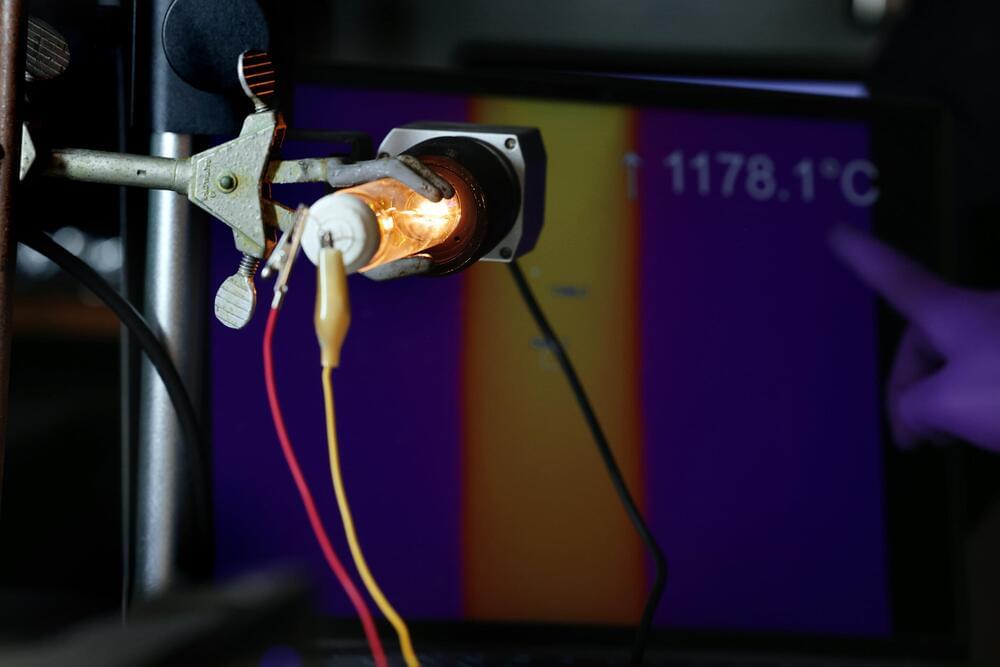
Twisted Edison: Filaments Curling at the Nanoscale Produce Light Waves that Twirl as they Travel
Bright, twisted light can be produced with technology similar to an Edison light bulb, researchers at the University of Michigan have shown. The finding adds nuance to fundamental physics while offering a new avenue for robotic vision systems and other applications for light that traces out a helix in space.
“It’s hard to generate enough brightness when producing twisted light with traditional ways like electron or photon luminescence,” said Jun Lu, an adjunct research investigator in chemical engineering at U-M and first author of the study on the cover of this week’s Science.
“We gradually noticed that we actually have a very old way to generate these photons—not relying on photon and electron excitations, but like the bulb Edison developed.”
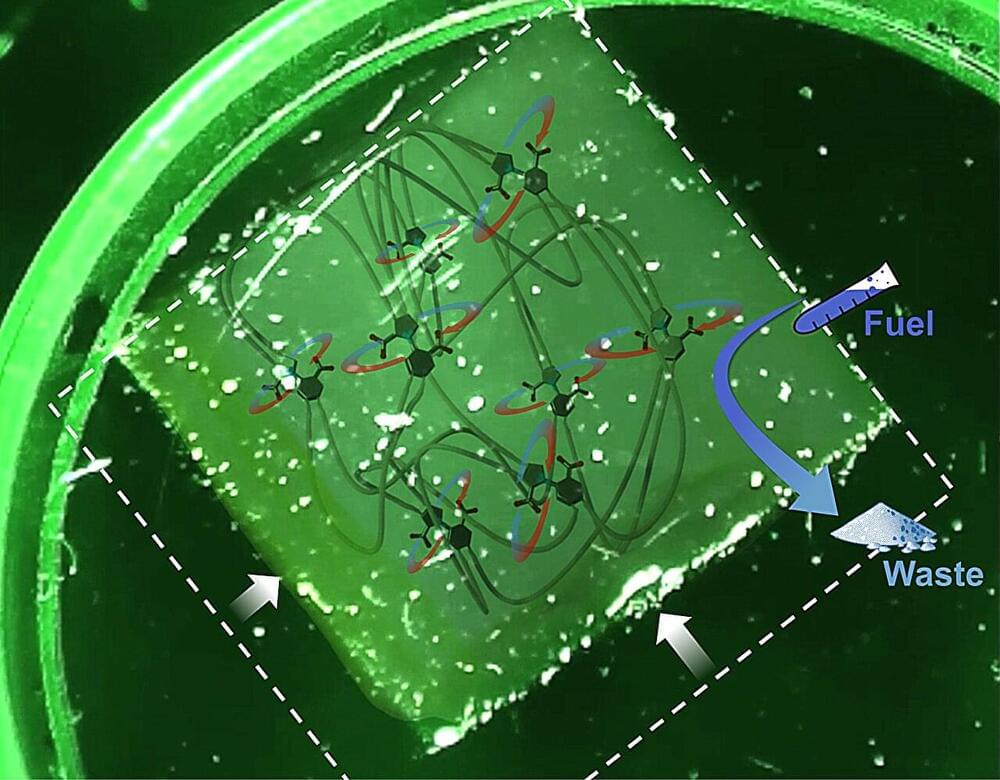
Artificial motors mimic muscle proteins, opening new paths in nanotech
Scientists have built an artificial motor capable of mimicking the natural mechanisms that power life. Just like the proteins in our muscles, which convert chemical energy into power to allow us to perform daily tasks, these tiny rotary motors use chemical energy to generate force, store energy, and perform tasks in a similar way.
The finding, from The University of Manchester and the University of Strasbourg and published in the journal Nature, provides new insights into the fundamental processes that drive life at the molecular level and could open doors for applications in medicine, energy storage, and nanotechnology.
“Biology uses chemically powered molecular machines for every biological process, such as transporting chemicals around the cell, information processing or reproduction. By replicating nature at the nanoscale level, we can design entirely new materials with highly specific functions that don’t exist in the natural world. Building this outside of nature also gives us greater simplicity and control over its functions and uses,” said Professor David Leigh, lead researcher from The University of Manchester.
Humans Glow In The Dark, It’s Just Too Weak For Our Eyes To See
Link :-🔗: https://bit.ly/4jligRa.
Believe it or not, humans emit a faint glow all the time—it’s just invisible to the naked eye. This isn’t science fiction; it’s biology at work.
What’s behind this subtle light show, and why don’t we notice it? Let’s shed some light on this fascinating phenomenon.
Picture a world where every living being radiates a soft, ethereal glow. Fireflies flicker in the twilight, deep-sea creatures pulse with neon brilliance, and even humans shimmer faintly in the darkness. While the glow of animals like jellyfish is a spectacle we can see, the glow of the human body is far more subtle—hidden, but no less real.
Yes, humans glow. This natural phenomenon, known as bioluminescence, is woven into the fabric of our biology. It’s a byproduct of the complex chemical reactions that fuel life, a quiet luminescence emitted by every cell. Yet, unlike the vibrant displays of other creatures, our glow is invisible to the naked eye, too faint to be perceived without specialized tools. It’s a scientific marvel that blurs the line between the tangible and the mystical, reminding us that even the unseen is a vital part of who we are.
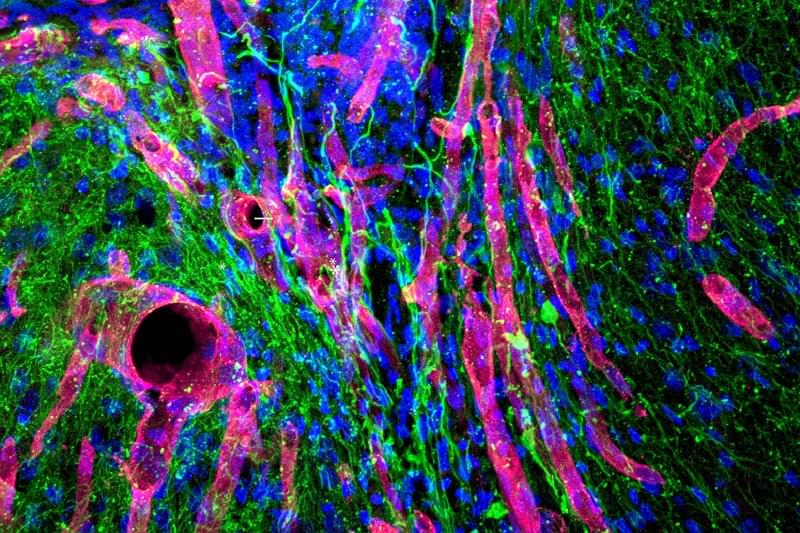
Biomaterial developed at UCLA helps regrow brain tissue after stroke in mice
A new stroke-healing gel created by UCLA researchers helped regrow neurons and blood vessels in mice whose brains had been damaged by strokes. The finding is reported May 21 in Nature Materials.
“We tested this in laboratory mice to determine if it would repair the brain and lead to recovery in a model of stroke,” said Dr. S. Thomas Carmichael, professor of neurology at the David Geffen School of Medicine at UCLA and co-director of the Eli and Edythe Broad Center of Regenerative Medicine and Stem Cell Research. “The study indicated that new brain tissue can be regenerated in what was previously just an inactive brain scar after stroke.”
The results suggest that such an approach could some day be used to treat people who have had a stroke, said Tatiana Segura, a former professor of chemical and biomolecular engineering at UCLA who collaborated on the research. Segura is now a professor at Duke University.
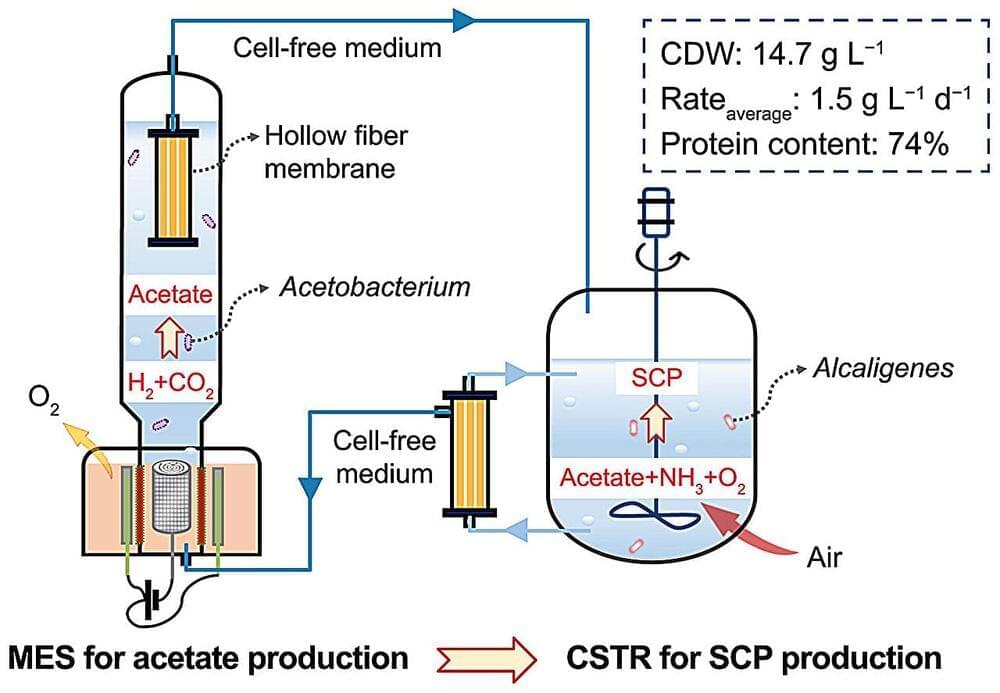
Dual-reactor system converts CO₂ to consumable single-cell protein
A team of chemical, industrial and biotechnical engineers affiliated with several institutions in China has developed a dual-reactor system that can be used to convert CO2 to a consumable single-cell protein. In their paper published in the journal Environmental Science and Ecotechnology, the group describes how they designed, built and tested their dual reactor system and its possible uses.
Scientists note two major impediments to the continued practical existence of mankind: climate change and food production. In this new effort, the team in China developed a dual-reactor system that tackles both problems at once—it uses carbon dioxide in the air to produce a type of protein that can be consumed as food.
The new system has two stages. The first uses microbial electrosynthesis to convert carbon dioxide into acetate, which then serves as an intermediary. The second stage involves feeding the acetate produced in the first stage into a reactor, where it is mixed with aerobic bacteria, which uses the acetate to produce a single-cell protein.
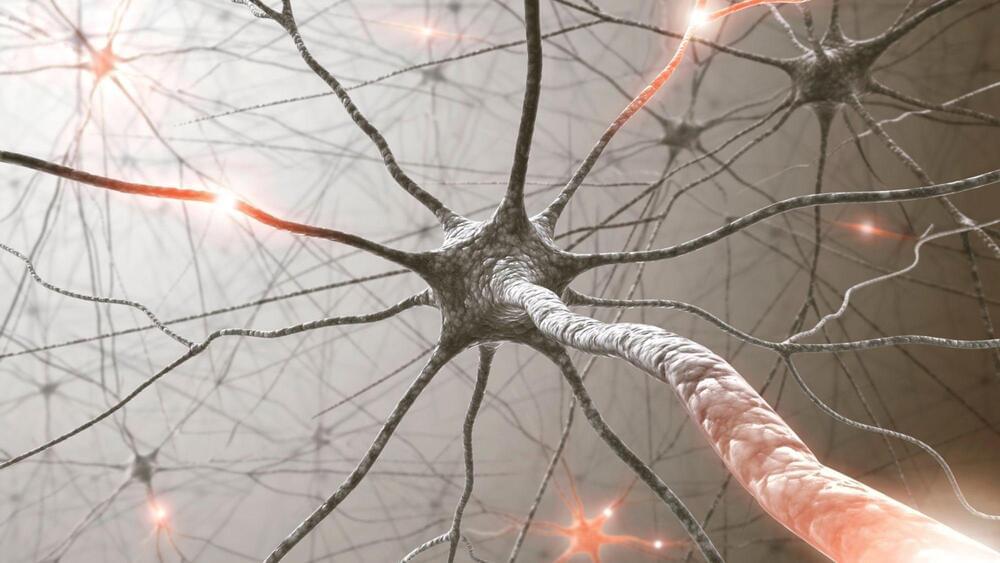
Unraveling a 500-Million-Year Mystery: Scientists Reveal Ancient Origins of the Ventral Nerve Cord
An international team of scientists has uncovered a fascinating piece of the evolutionary puzzle: the origin of the ventral nerve cord, a vital part of the central nervous system, in ecdysozoan animals—a group that includes insects, nematodes, and priapulid worms. Their study, published in Science Advances
<em> Science Advances </em> is a peer-reviewed scientific journal established by the American Association for the Advancement of Science (AAAS). It serves as an open-access platform featuring high-quality research across the entire spectrum of science and science-related disciplines. Launched in 2015, the journal aims to publish significant, innovative research that advances the frontiers of science and extends the reach of high-impact science to a global audience. “Science Advances” covers a broad range of topics including, but not limited to, biology, physics, chemistry, environmental science, and social sciences, making it a multidisciplinary publication.

Shocking cues: How cells harness electric fields to migrate during embryonic development
As an embryo grows, there is a continuous stream of communication between cells to form tissues and organs. Cells need to read numerous cues from their environment, and these may be chemical or mechanical in nature. However, these alone cannot explain collective cell migration, and a large body of evidence suggests that movement may also happen in response to embryonic electrical fields. How and where these fields are established within embryos was unclear until now.
“We have characterized an endogenous bioelectric current pattern, which resembles an electric field during development, and demonstrated that this current can guide migration of a cell population known as the neural crest,” highlights Dr. Elias H. Barriga, the corresponding author who led the study published in Nature Materials.
Initially, Dr. Barriga and his team began research on the neural crest at the former Gulbenkian Institute of Science (IGC) in Oeiras, Portugal before continuing research in Dresden, establishing a group at the Cluster of Excellence Physics of Life.
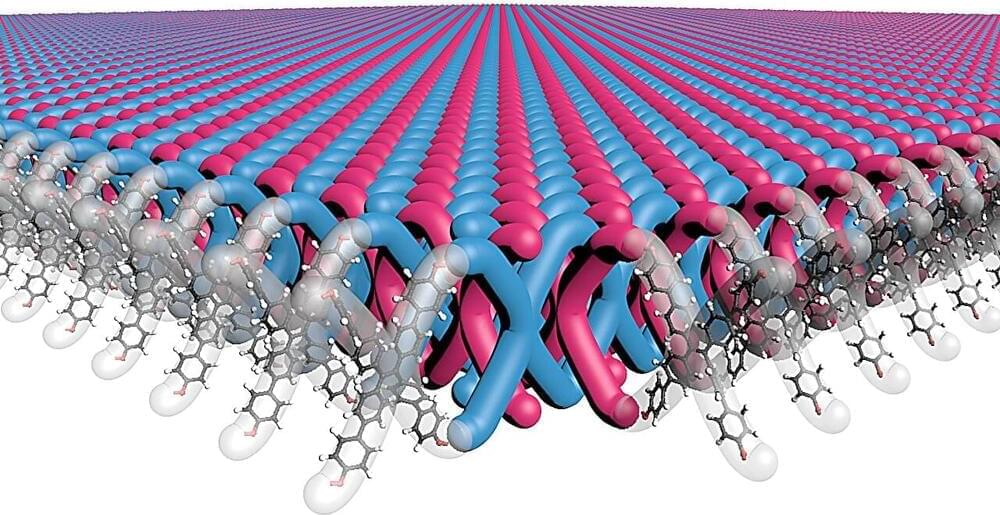
New chainmail-like material could be the future of armor
In a remarkable feat of chemistry, a Northwestern University-led research team has developed the first two-dimensional (2D) mechanically interlocked material.
Resembling the interlocking links in chainmail, the nanoscale material exhibits exceptional flexibility and strength. With further work, it holds promise for use in high-performance, light-weight body armor and other uses that demand lightweight, flexible and tough materials.
Publishing on Jan. 17 in the journal Science, the study marks several firsts for the field. Not only is it the first 2D mechanically interlocked polymer, but the novel material also contains 100 trillion mechanical bonds per 1 square centimeter—the highest density of mechanical bonds ever achieved.
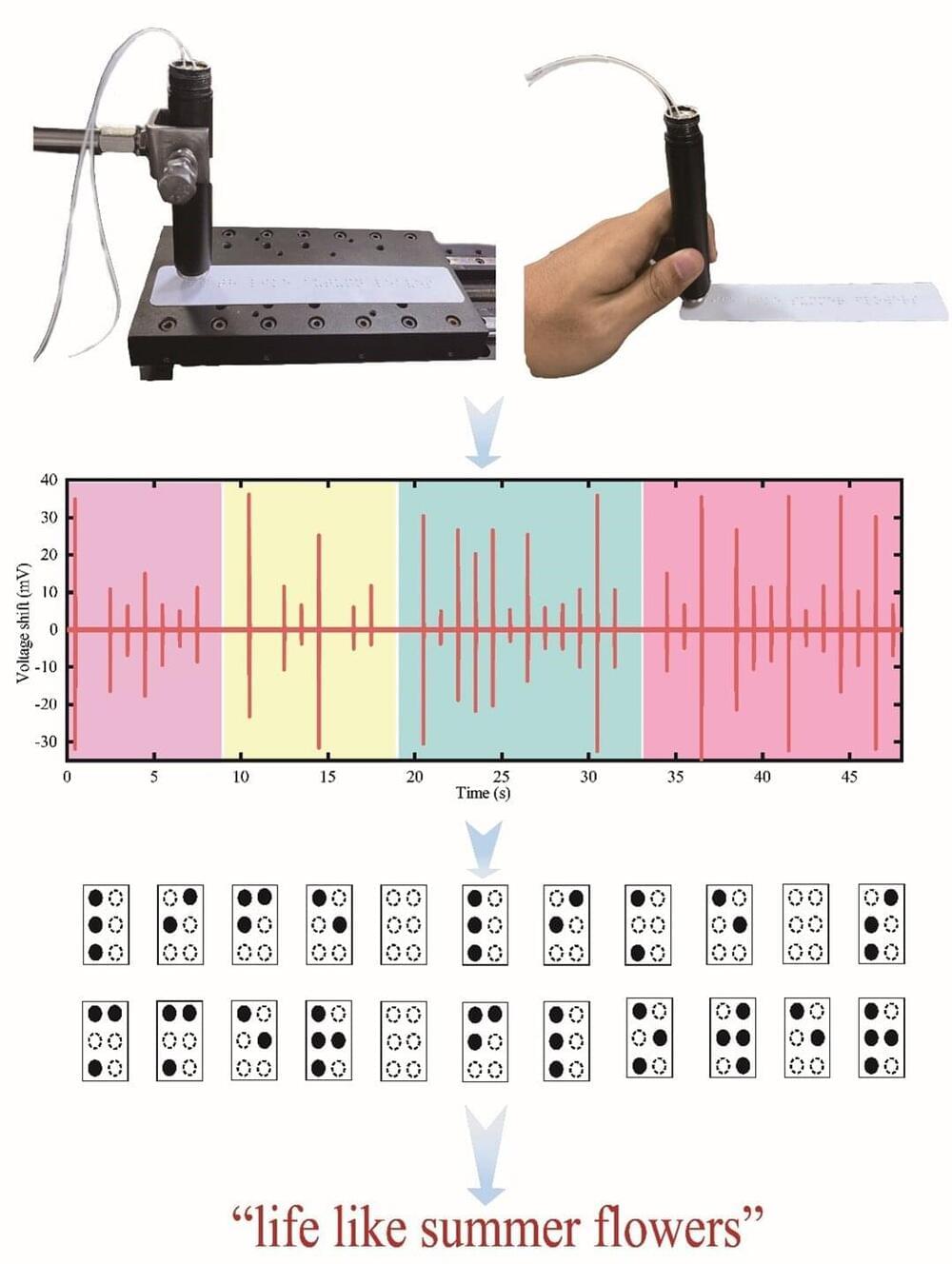
Skin-inspired optical sensor reads Braille at the speed of touch
An international team of chemists has successfully created methylenedistibiranes, which are three-membered rings that have two antimony atoms and one carbon atom. In their paper published in the Journal of the American Chemical Society, the group describes how they were able to make the rings using just a three-step process.
Methylenedistibiranes are generally used as intermediaries due to their ability to promote selective nucleophilic substitution, resulting in the creation of diantimonyl anions. Chemists have been wanting to be able to create them because it is difficult to use natural elements due to orbital overlap. The achievement by the team is noteworthy because making similar rings with heavier pnictogen elements like antimony and bismuth has proven to be challenging due to changes in orbital overlap trends and energies.
To create the three-membered rings, the research team first synthesized diazadistiboylidenes using [3+2]-cycloaddition between distibene and diazoolefins, which are five-membered rings that have dual antimony, nitrogen and carbon atoms. The resulting stiboylidene served as an intermediary to promote the substitution of a species with bonds formed during donation of electron pairs. The researchers note that it was a surprise to them that the reaction worked as well as it did, since there are few examples of small ring formation with more than one antimony atom.